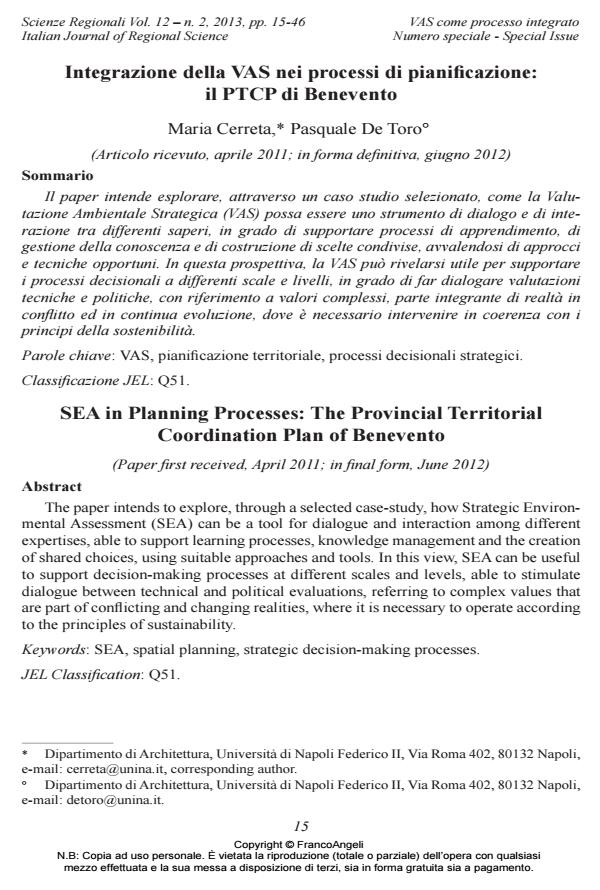Integrazione della VAS nei processi di pianificazione: il PTCP di Benevento
Titolo Rivista SCIENZE REGIONALI
Autori/Curatori Maria Cerreta, Pasquale De Toro
Anno di pubblicazione 2013 Fascicolo 2013/2
Lingua Italiano Numero pagine 31 P. 15-45 Dimensione file 1228 KB
DOI 10.3280/SCRE2013-002002
Il DOI è il codice a barre della proprietà intellettuale: per saperne di più
clicca qui
Qui sotto puoi vedere in anteprima la prima pagina di questo articolo.
Se questo articolo ti interessa, lo puoi acquistare (e scaricare in formato pdf) seguendo le facili indicazioni per acquistare il download credit. Acquista Download Credits per scaricare questo Articolo in formato PDF

FrancoAngeli è membro della Publishers International Linking Association, Inc (PILA)associazione indipendente e non profit per facilitare (attraverso i servizi tecnologici implementati da CrossRef.org) l’accesso degli studiosi ai contenuti digitali nelle pubblicazioni professionali e scientifiche
Il paper intende esplorare, attraverso un caso studio selezionato, come la Valutazione Ambientale Strategica (VAS) possa essere uno strumento di dialogo e di interazione tra differenti saperi, in grado di supportare processi di apprendimento, di gestione della conoscenza e di costruzione di scelte condivise, avvalendosi di approcci e tecniche opportuni. In questa prospettiva, la VAS può rivelarsi utile per supportare i processi decisionali a differenti scale e livelli, in grado di far dialogare valutazioni tecniche e politiche, con riferimento a valori complessi, parte integrante di realtà in conflitto ed in continua evoluzione, dove è necessario intervenire in coerenza con i principi della sostenibilità.
Parole chiave:VAS, pianificazione territoriale, processi decisionali strategici.
Jel codes:Q51
- New Metropolitan Perspectives Alessio D’Auria, Irina Di Ruocco, pp.774 (ISBN:978-3-031-06824-9)
Maria Cerreta, Pasquale De Toro, Integrazione della VAS nei processi di pianificazione: il PTCP di Benevento in "SCIENZE REGIONALI " 2/2013, pp 15-45, DOI: 10.3280/SCRE2013-002002